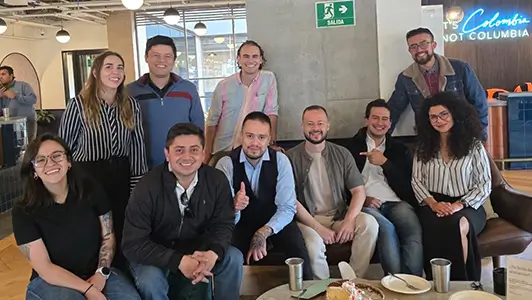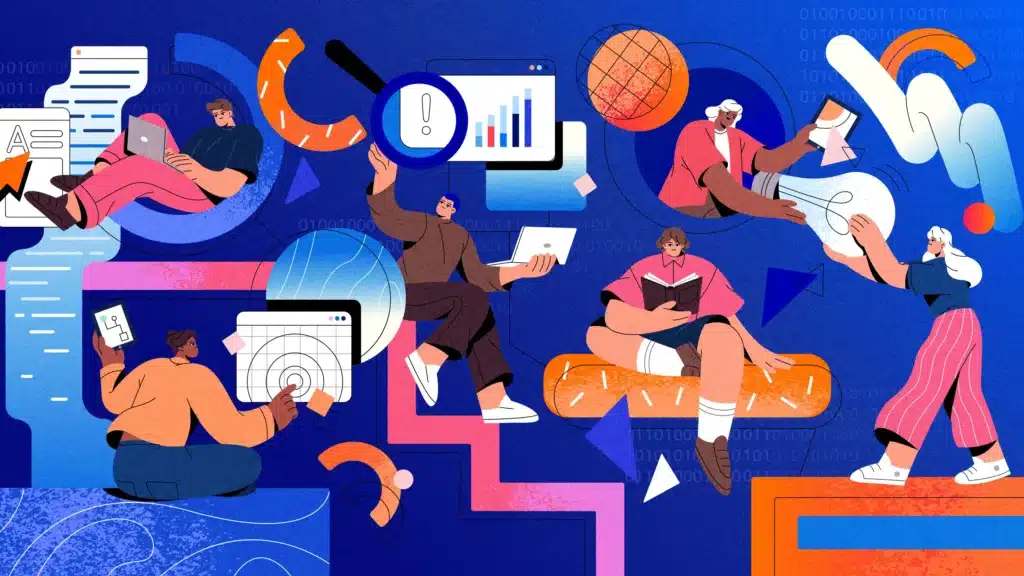Guide
A guide to choosing the right change management model
- Navigating organizational change can be complex, but selecting the right model simplifies the process. Our comprehensive guide breaks down popular change management models and helps you determine which one is the best fit for your situation.
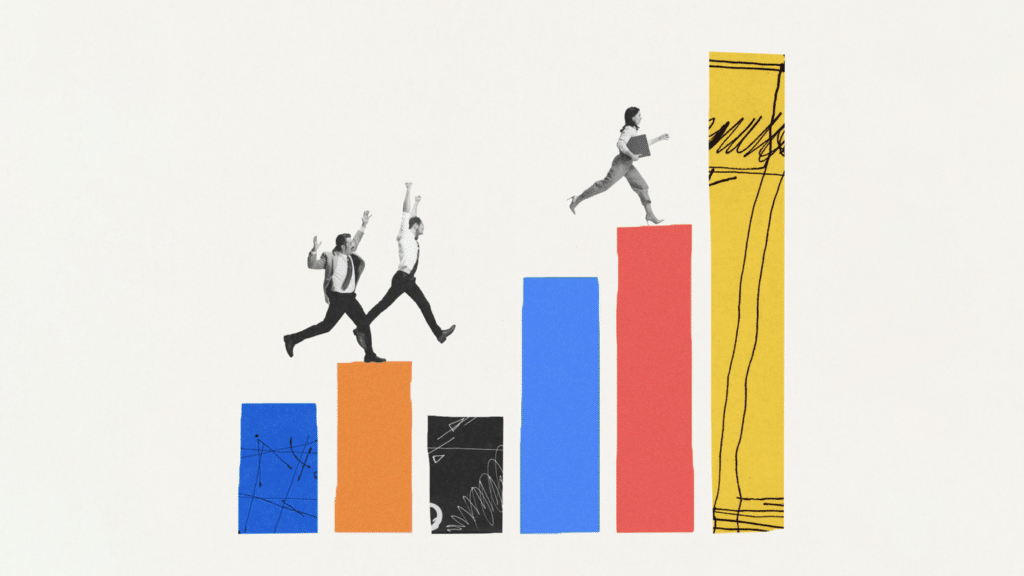
Change is an inevitable part of life, both personally and professionally. Yet, every individual and organization experiences and reacts to change differently. Whether it’s adapting to new market realities, shifting organizational structures, or implementing new technologies, change can be daunting and complex. Reflecting on past experiences of change can reveal not just the challenges faced but also the strategies that led to success or failure. As we consider these varied responses to change, it becomes clear that having a structured approach can greatly assist in managing these transitions more effectively.
A vast array of change management models, ranging from simple and flexible to sophisticated and complex, prescribes processes to guide you through the people aspects of your change.
But, even with an abundance of models, change within an organization remains hard. Why? Because it isn’t as easy as selecting a tool and hitting the “go” button. No single change model can apply to every situation you will face. Understanding the different models and knowing when and how they can be best used will help you select the model that best aligns with your organization—increasing your chance for success. If none of them fit, which is often the case, consider using their concepts and tools to develop your own custom model.
When selecting or developing a change model, consider the following:
Organizational culture
Does your organization have a classic hierarchy where winning support from a powerful executive can make or break your project? Or is it more participative? Understanding the role of authority and decision-making dynamics will influence how you communicate and leverage executives and sponsors.
Type of change
What type of change are you looking to implement? Organizational, culture, process, or technology? How transformative will the change be within your organization?
Motivation for change
Think about your organization’s motivation for change. Are you initiating the change to keep the organization alive, or are you making a change to achieve an organizational goal? How motivated are your team members to change their behavior, and what do they perceive to be the risks?
Scale of change
How broadly does the change touch your organization? Is managing the change at the individual stakeholder level feasible, or does your approach need to scale across a large, complex organization? Large-scale technology changes typically require large-scale change management efforts, whereas the same model may be overkill for a smaller change.
ADKAR®
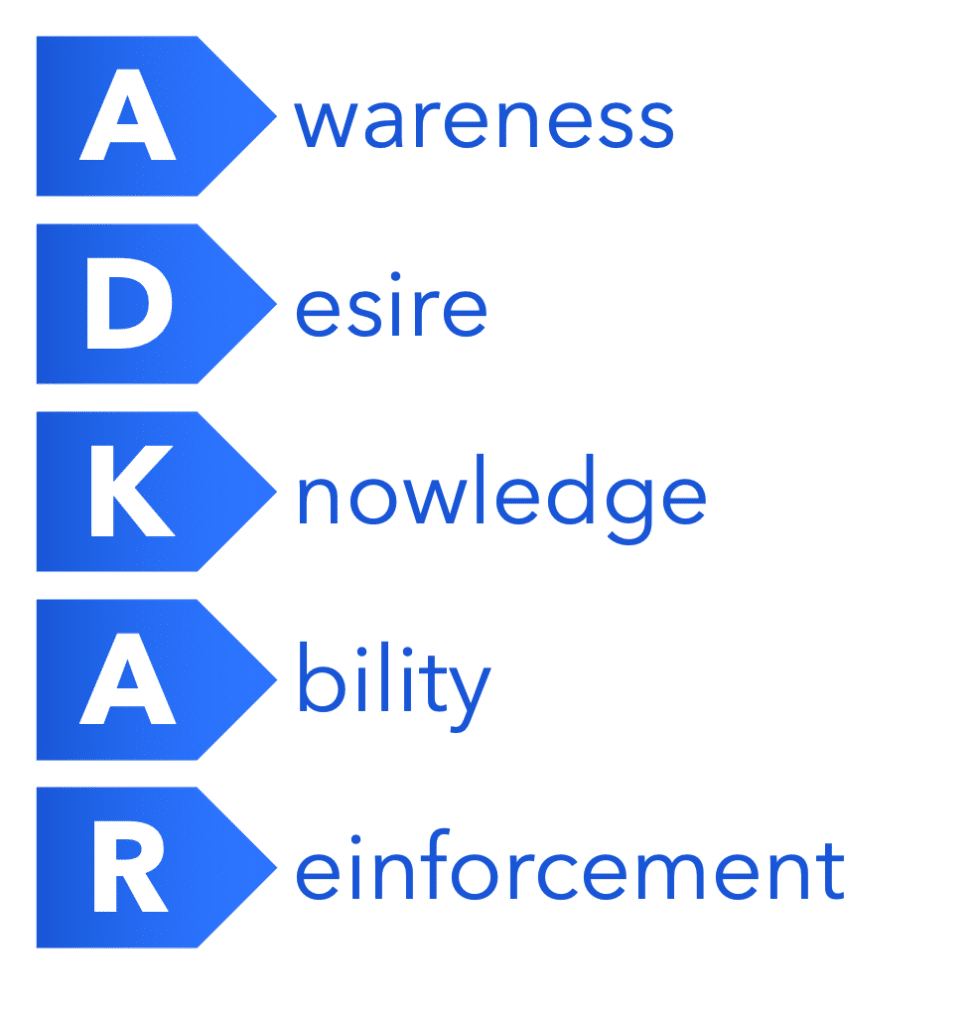
What is it?
Five milestones an individual must achieve for successful change -Awareness, Desire, Knowledge, Ability, Reinforcement®
Use this model when:
- Diagnosing employee resistance
- Helping individual employees transition through change
- Creating action plans for personal and professional advancement
- Beneficial at any stage of a project
Types of change
Organization, Culture, Process, Technology
Pros
- Helpful for managing individuals through change
- Allows for a unique change plan at the individual level
Cons
- Focuses on individuals instead of the organization
- Difficult to scale for a large organization or a change with broad stakeholder impacts
Kotter’s 8-Step Model®
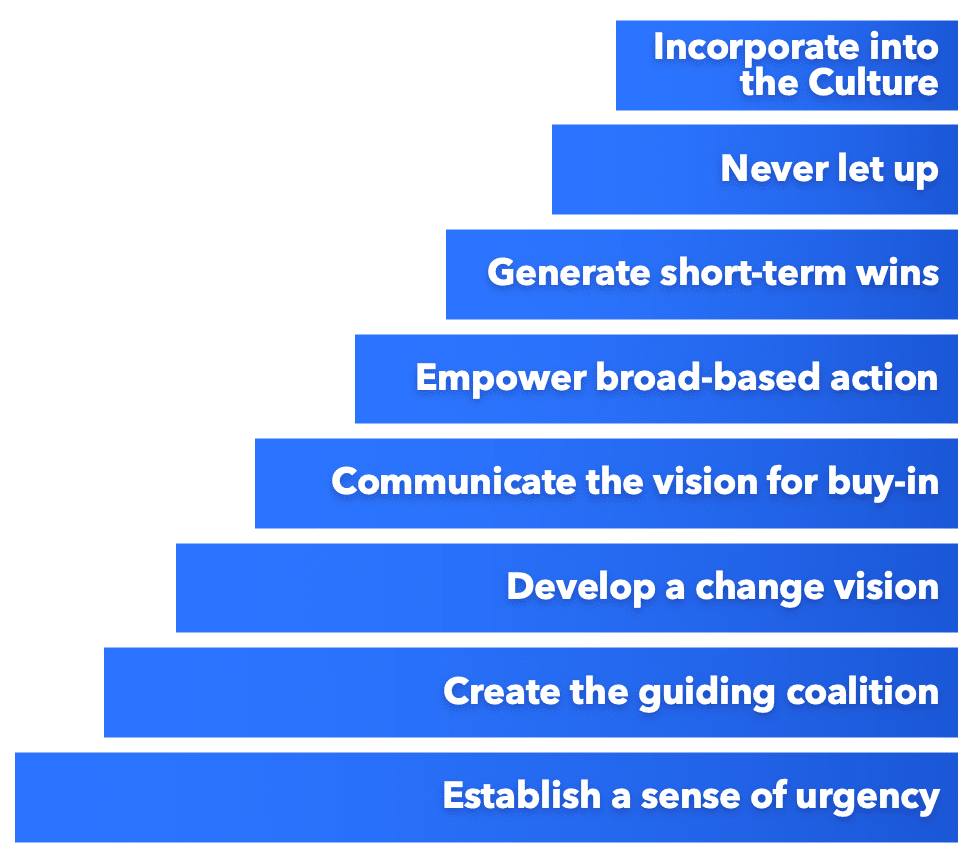
What is it?
Eight steps to engage employees in a change – Create, Build, Form, Enlist, Enable, Generate, Sustain, and Institute
Use this model when:
- Considering a high-impact change that broadly touches an org
- Engaging in a culture with classical hierarchies
- Mostly only useful at the beginning of a project
Types of change
Process, Technology
Pros
- Focuses on obtaining buy-in of employees
- Provides a robust checklist for the change process
Cons
- Top-down model results in limited flexibility
- Strong model for initiating change, but not for sustaining change
McKinsey’s 7-S Model®
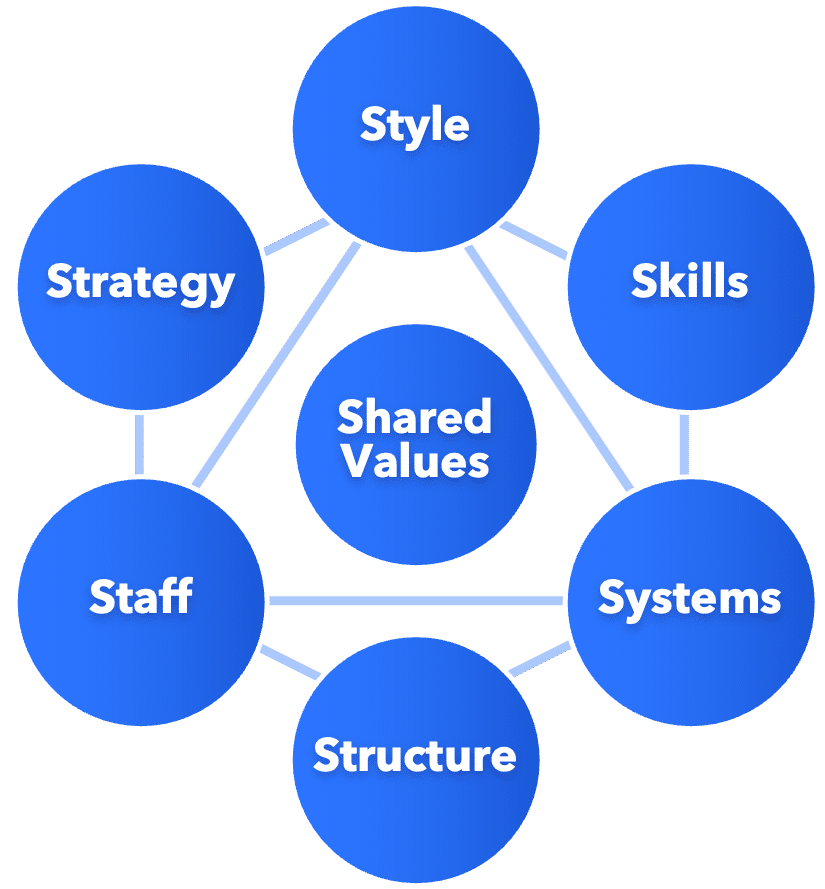
What is it?
Seven organizational elements that must be aligned and reinforce one another – Structure, Strategy, Systems, Style, Staff, and Skill
Use this model when:
- Identifying what needs to be realigned to improve performance or to maintain alignment (and performance) during change
- Understanding how organizational elements are interrelated and impacted by a change
- Mostly only useful at the beginning or middle of a project
Types of change
Organization, Process, Technology
Pros
- Takes a holistic approach to change and ensures that change activities are integrated
- Supports effective change diagnostic and understanding of the org
Cons
- Complexity of the model does not allow for flexibility
Lewin’s Change Management Model®
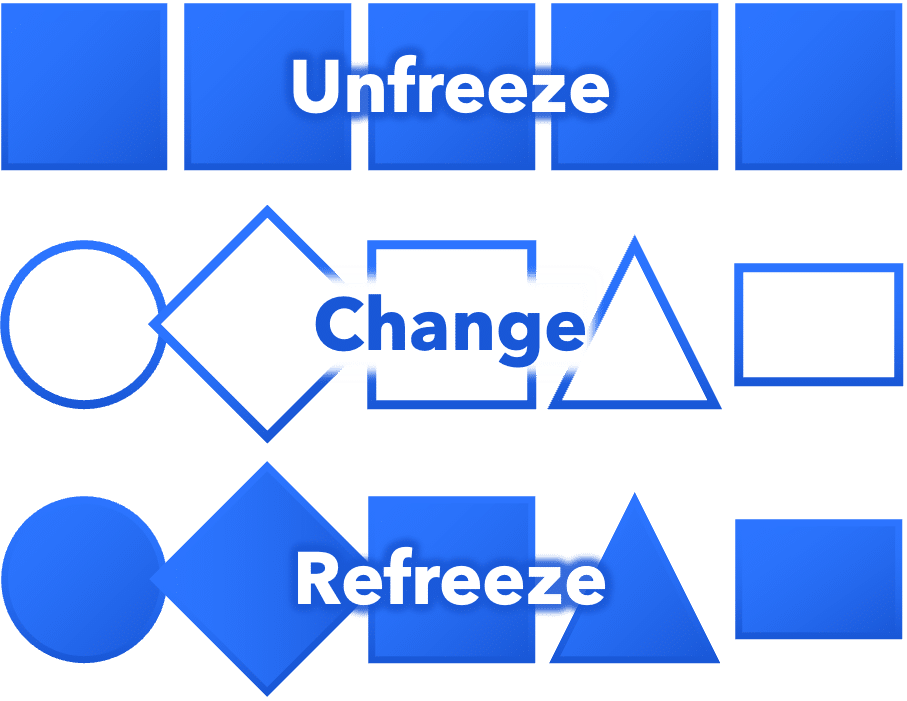
What is it?
Framework for unfreezing old activities, introducing the new concept, and freezing new activities
Use this model when:
- Making a change that requires flexibility and a lightweight structure
- Striving to ensure that the change is adopted permanently
- Beneficial at any stage of a project
Types of change
Organization, Culture, Process, Technology
Pros
- Encourages reinforcement and ongoing monitoring of change
- Allows for flexibility in the planning and implementation of change
Cons
- Simplistic model that requires interpretation to be actionable
- The refreeze component of the model can be challenging with the pace of change
Kubler-Ross Change Curve®
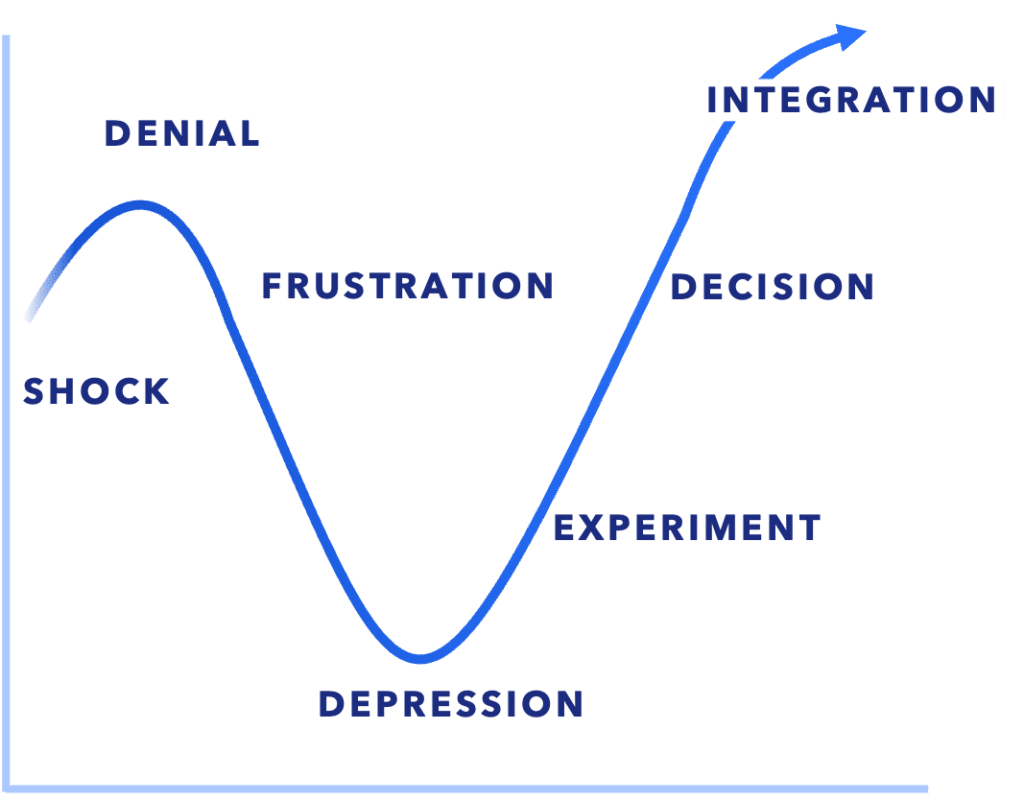
What is it?
A way of analyzing the seven emotions that individuals experience during change
Use this model when:
- Assessing where your stakeholders are and where they need to be to adopt a change
- Predicting how performance will be affected by the announcement and implementation of significant change
- Beneficial at any stage of a project
Types of change
Organization, Culture
Pros
- Captures an individual’s reaction to change
- Forms a foundation for developing individual action plans
Cons
- Assumes all individuals will progress through an adverse reaction to change at the same pace
- Difficult to identify the transition between stages
Lean Change Management
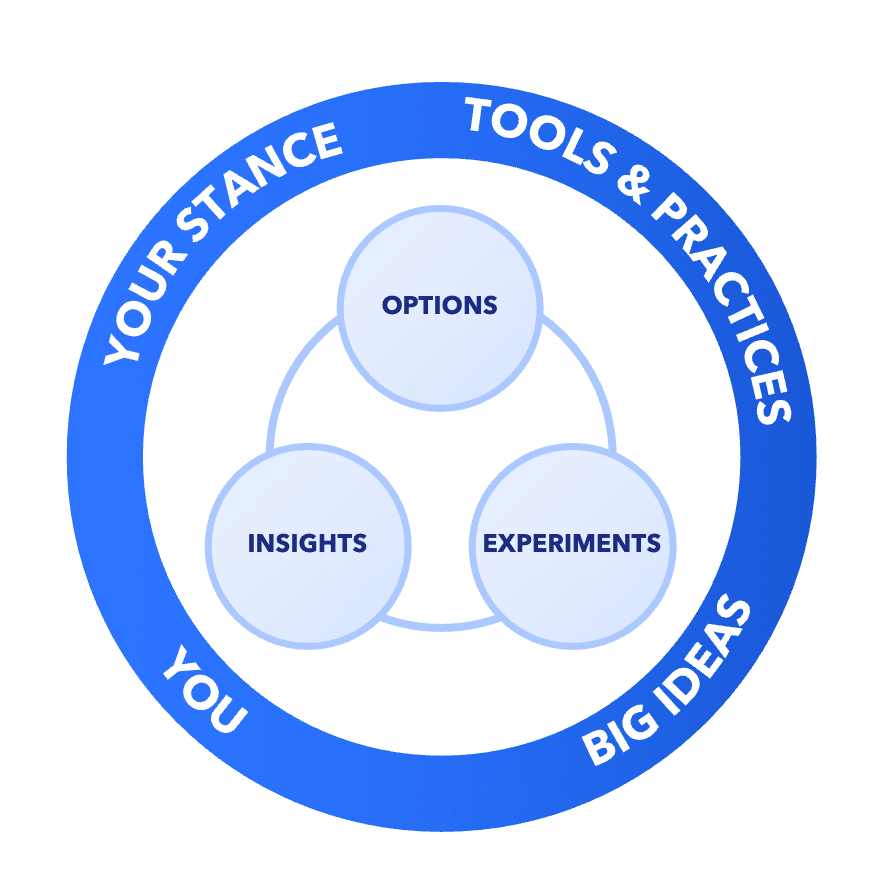
What is it?
Lean framework that applies change management practices to reduce waste
Use this model when:
- Implementing a transformation plan with minimal resources
- Implementing change in an org that adheres to lean methodology
- Mostly only useful at the beginning or middle of a project
Types of change
Organization, Culture, Process, Technology
Pros
- Supports efficient use of resources
- Defined change program allows for consistency in the approach
Cons
- Works best in a culture with a traditional top-down model
- Structured change plans are not pliable as you progress through the project
Summary

Pariveda has practical experience leading our clients through change
As you can see, every model has its merits, but not all will be right for your culture, your change, or your goals. The best approach for your change may require customizing and tailoring model concepts and ideas to fit your needs. The most value comes from thinking practically about change. Be realistic about what your organization can take on. If none of the models fit entirely, take the pieces that work and make them your own.
Pariveda has practical experience leading our clients through change. Our experienced team can help you design and implement a strategy for change that meets the unique needs of your culture, situation, and organization.

INSIGHTS
News
Press Release









